
TIPS
1) Tips for Thai Foot Reflexology
Conditions of light headache, dizziness, drowsiness, and weakness may occur during or at the end of the session or the day after, this may due to the body's cleansing process. The receiver can increase the cleansing process by drinking more warm water or herbal tea. Giver should provide and encourage receiver to drink warm water or herbal tea before, during and after the session to facilitate the detoxification from the reflexology result.
The frequency of the reflexology depends upon the receiver's condition. Normally, it can be done as often as one would like and the person's condition allows. Sensitive individuals should not receive reflexology more than twice per week. In general, to maintain health-wellness and for prevention, receiving Foot Reflexology once a week should be appropriate.
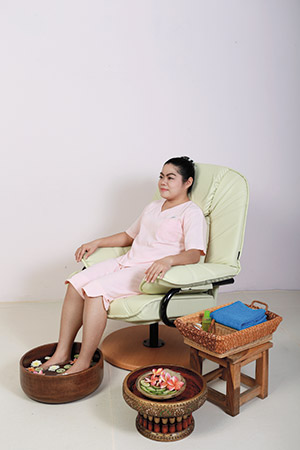
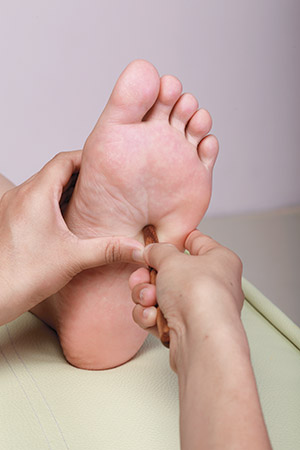
Reference
Thai Massage School of Chiang Mai (2016) Thai Foot Reflexology for Health, Chiang Mai, Thai Massage Book Press
2) Tips to get along with knee pain
Making an effort to control body weight is advisable (excessive weight can increase knee stress especially in an elderly with osteoarthritis). Avoid deep knees bending since it may increase stress or strain on the knee joint. Combine Therapeutic Thai massage with other treatment and exercises are advantages for patients.
Reference
Thai Massage School of Chiang Mai (2016) Therapeutic Thai Massage Level 3, Chiang Mai, Thai Massage Book Press
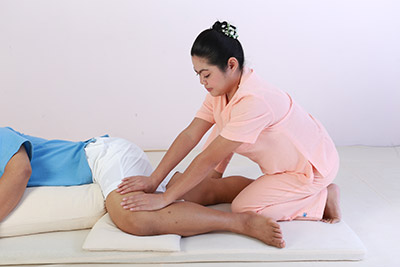
3) Tips to get along with sprained ankle
Rehabilitation exercises program for ankle sprain can help strengthening ankle and preventing re–injury. Thai massage is advised to be an additional or alternative treatment to ease ankle pain and increase blood flow, activating the complete healing process for patients with chronic ankle sprain.
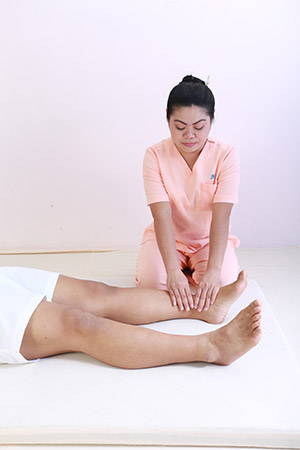
Reference
Thai Massage School of Chiang Mai (2016) Therapeutic Thai Massage Level 3, Chiang Mai, Thai Massage Book Press
4) Tips to get along with shoulder blade stiffness
Combination therapy of Thai massage and physiotherapy is an appropriate way to treat patients. Most patients need massage therapist after 6 months to as long as 3 years. The result not only decrease pain and increase range of shoulder motion but also relieve the patients' anxiety.
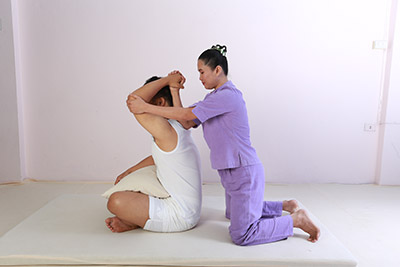
Reference
Thai Massage School of Chiang Mai (2016) Therapeutic Thai Massage Level 3, Chiang Mai, Thai Massage Book Press
5) Tips to get along with neck stiffness
To stay away from neck stiffness: Keep good posture and body proportion during sitting on arm–rest chair. Sleeping on firm bed and proper pillow. Avoid lying on abdomen.
- Avoid continuously sitting for too long. Try walking in between.
- Keep good body mechanics during lifting any object.
- Try to relax. It may help decreasing tension and tightness.
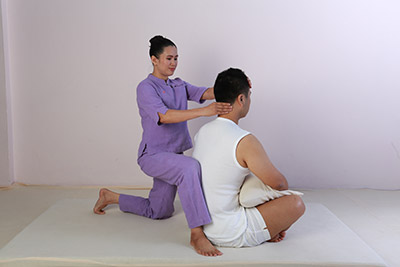
Reference
Thai Massage School of Chiang Mai (2016) Therapeutic Thai Massage Level 3, Chiang Mai, Thai Massage Book Press
6) Tips to get along with headache and neck pain
It is necessary that Thai massage therapist should take care for the underlying condition of patients with tension headache and neck pain. Tension headaches that occur as a symptom of another condition are usually relieved when the underlying condition is treated. However, therapeutic Thai massage is found to have the desired effect in helping lessen drug overuse patients with tension headache and neck pain.
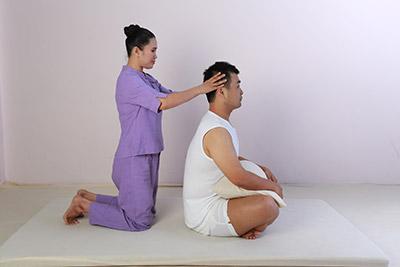
Reference
Thai Massage School of Chiang Mai (2016) Therapeutic Thai Massage Level 3, Chiang Mai, Thai Massage Book Press
7) Tips to get along with menstrual cramps
Since this discomfort is not the same as premenstrual syndrome, Thai massage is one effective method that can help with prevention. To relieve menstrual cramps, one may rest when needed, avoid foods that contain caffeine, avoid smoking and drinking alcohol and avoid massaging lower back and abdomen. Mild menstrual cramp can be responded by taking medications as soon as the cramping starts, and heating pad may be placed on lower back or abdomen.
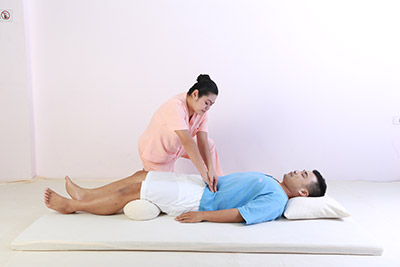
Reference
Thai Massage School of Chiang Mai (2016) Therapeutic Thai Massage Level 3, Chiang Mai, Thai Massage Book Press
8) Tips to get along with arm weakness, numbness and stiffness
Try to rest the arm and use it less, use cold compression on affected area 2–3 times per day to relieve pain, and keep arm elevated to reduce swelling.
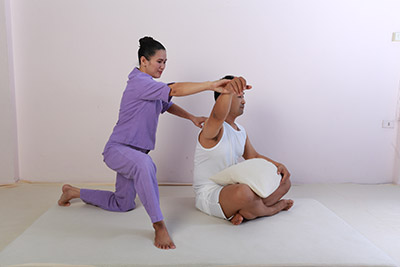
Reference
Thai Massage School of Chiang Mai (2016) Therapeutic Thai Massage Level 3, Chiang Mai, Thai Massage Book Press
9) Tips to get along with indigestion and gas pain
To relief from symptoms of indigestion, one might change eating behavior, by eating several small, low–fat meals throughout the day at a slow pace. In addition, try to find ways to decrease emotional and physical stress, such as massage, or yoga.
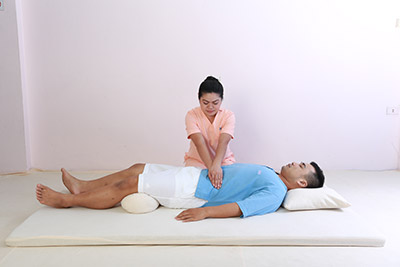
Reference
Thai Massage School of Chiang Mai (2016) Therapeutic Thai Massage Level 3, Chiang Mai, Thai Massage Book Press
10) Tips to get along with constipation
The best way to prevent constipation is to eat food with fiber and drink plenty of water.
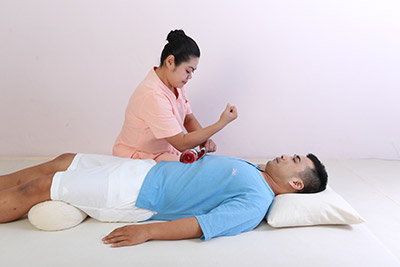
Reference
Thai Massage School of Chiang Mai (2016) Therapeutic Thai Massage Level 3, Chiang Mai, Thai Massage Book Press
11) Tips to get along with leg pain, cramps or stiffness
Take a rest as much as possible, keep leg elevated, apply ice for up to 15 minutes, or gently stretch and massage the cramping muscles.
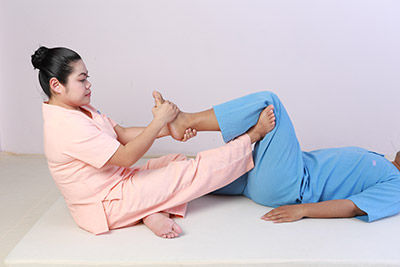
Reference
Thai Massage School of Chiang Mai (2016) Therapeutic Thai Massage Level 3, Chiang Mai, Thai Massage Book Press
Thai Massage Demonstration at TMC School
A Day of Thai Massage Class at TMC School
